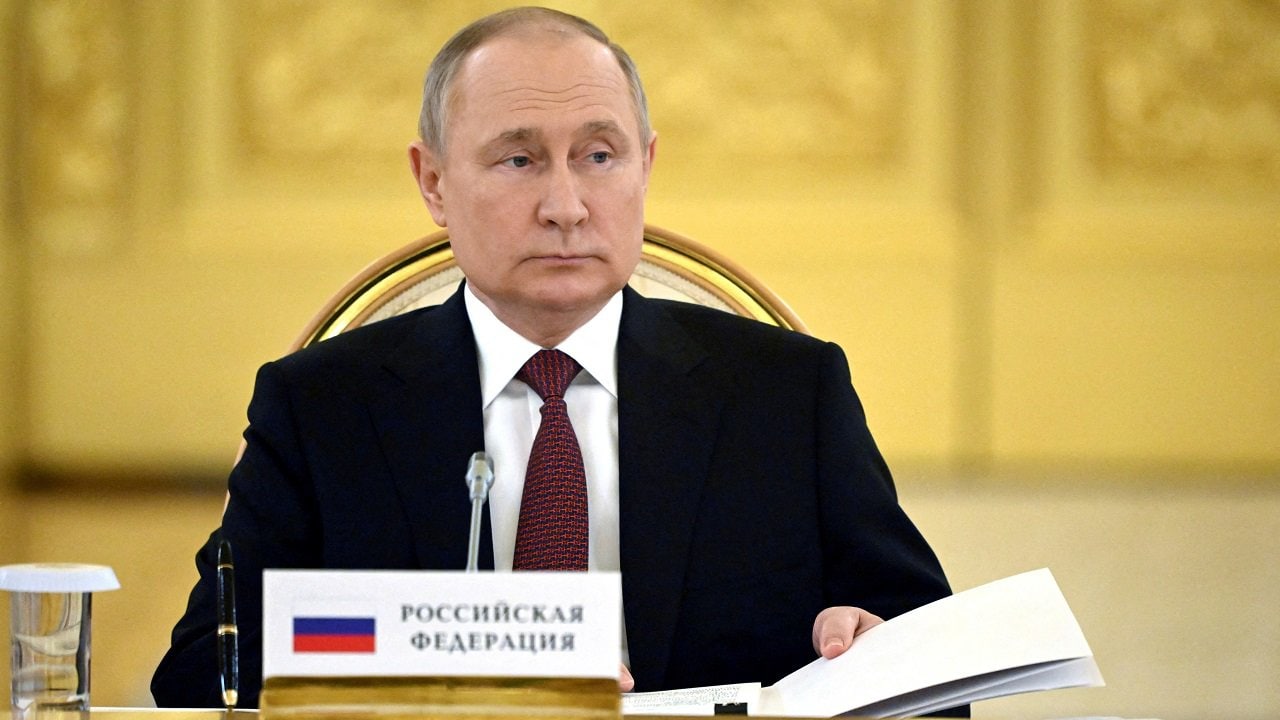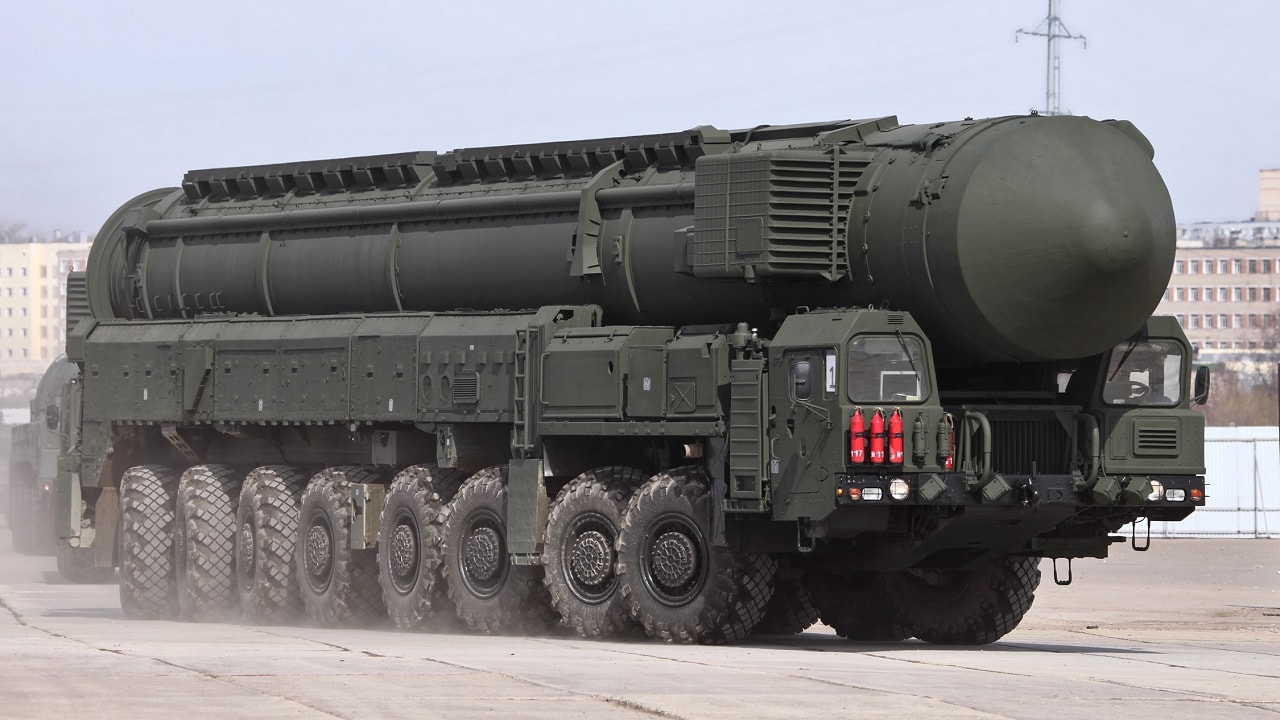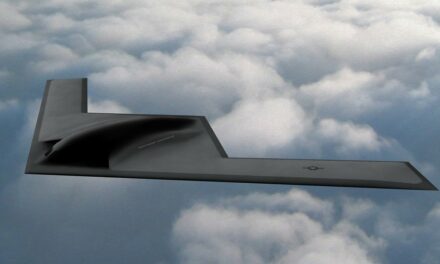We support our Publishers and Content Creators. You can view this story on their website by CLICKING HERE.
Key Points: The war in Ukraine has entered a dangerous phase as Ukraine’s use of ATACMS missiles has triggered a Russian response with the Oreshnik Intermediate Range Ballistic Missile (IRBM). According to recent reporting, the challenge is that Ukraine has only 50 ATAMCS missiles at its disposal.
-The Oreshnik, capable of carrying conventional or nuclear warheads, can travel at Mach 10 with a range of 3,100 miles and deploys multiple warheads. This marks the first use of a conventionally-armed IRBM in combat, reigniting a missile race reminiscent of the pre-INF Treaty era.
-Russia’s deployment of advanced missiles raises concerns about escalation, undermines peace prospects, and complicates President-elect Trump’s plans to end the war. NATO allies are alarmed, warning of the risk of nuclear escalation as tensions soar.
Oreshnik vs. ATACMS: The New Missile Race in Ukraine
Missile attacks have been deadly in the war in Ukraine, often hitting cities with a heavy loss of life to civilians. But now it takes a colossal launch of 200 missiles or more to make a difference. They can be shot down by surface-to-air missile batteries and even airplanes, while many targets are not even hit.
That is why it is somewhat questionable that Ukraine is going the ATACMS route when they only have around 50 of the long-range missiles left to deploy.
Russia Deploys Intermediate Range Ballistic Missile
The use of the ATACMS is a gamble that has made Vladimir Putin apoplectic and risked sparking a broader war and even the possibility that the Russian president could test a tactical nuclear weapon in response.
ATACMS missiles Ukraine wants. Image Credit: Creative Commons.
So far, the mercurial leader has ordered the firing of a new Intermediate Range Ballistic Missile called the Oreshnik or Hazel that flew as far as Dnipro in central Ukraine on November 21.
This hypersonic Oreshnik exploded its six to eight conventional warheads, but it can also be nuclear-tipped. The missile can fly at MACH 10 with a range of 3,100 miles, and Putin believes it is unstoppable. It could even deploy a multiple independently targetable re-entry vehicle (MIRV), making it much more dangerous.
“The flight time of this Russian missile from the moment of its launch in the Astrakhan region to its impact in the city of Dnipro was 15 minutes,” Ukraine’s Main Directorate of Intelligence said in a statement on Nov. 22.
This Missile Would Have Been Banned During a Reagan-era Treaty
Perhaps the ATACMS would not be worth it if Russia were willing to unveil one of its most potent and fastest missiles in response.
A conventionally-armed Intermediate Range Ballistic Missile has never been used in combat, and they were banned during the Intermediate-Range Nuclear Forces Treaty that the United States withdrew from in 2019 because of years of Russian non-compliance.
Now, we have a new missile race in Ukraine and Russia. The United States allows long-range strikes from ATACMS by Ukrainian rocket forces, and then the Russians respond with something even more powerful and deadly.
Trump’s Peace Plans Are In Danger
The choice to use the ATACMS comes with a political cost for the Americans as well.
President-elect Donald Trump ran with a promise that he would end the war, and if there is a missile race between Ukraine and Russia, it will take more political capital to get both sides to stop fighting. Russia will not take the United States seriously because it wants to end the war, and Ukraine is not as likely to go to the negotiation table if they think they will be hit with the Oreshnik.
Russia reportedly has even more new missiles as a result of its “Kedr” missile complex that tests Intercontinental Ballistic Missiles and other types of munitions that fly ultra-far and fast.

Russian President Vladimir Putin attends the Collective Security Treaty Organisation (CSTO) summit at the Kremlin in Moscow, Russia May 16, 2022. Sputnik/Sergei Guneev/Pool via REUTERS ATTENTION EDITORS – THIS IMAGE WAS PROVIDED BY A THIRD PARTY./File Photo
Putin Says He Has the Right to Launch the Oreshnik
Putin has claimed that Russia has the wherewithal to defend itself after the ATACMS launch. “We believe that we have the right to use our weapons against military facilities of the countries that allow to use their weapons against our facilities,” he said.
It will be interesting to see if Ukraine orders additional ATACMS to be deployed against Russia. It is not clear how many more of the long-range missile systems will be exported to Kyiv. It is also not known how many Oreshniks will be deployed against Ukrainian targets.
NATO allies are concerned, and they called a hasty meeting with Ukraine after it was determined that Russia launched the intermediate-range Oreshnik. If Putin did the worst and fashioned nuclear warheads to the MIRV, there would be that chance of an incredibly deadly launch by Russia.
Ukraine and its allies should take a second look at the use of ATACMS. Do they have enough to make a difference? Is it worth antagonizing Putin? How far is the United States willing to go to escalate the conflict? Russia is determined to use advanced IRBMs that can outclass anything the Ukrainians can field.
Once again, Ukraine’s Volodymyr Zelensky and President Joe Biden have not considered their decisions’ strategic consequences. There are not enough ATACMS to be decisive. Russia is holding better missile technology that they are not afraid to use, and Biden has torpedoed peace negotiations. This war is getting tiresome due to the massive loss of life. Now, there is a missile race that could lead to a nuclear fail-safe situation.

Russian Mobile ICBMs. Image Credit: Creative Commons.
This is not what the American people voted for when they elected Trump. It’s time the Ukrainians postpone their use of ATACMS to keep the Russians from bringing out their best new missiles that could someday be nuclear-tipped and create mass casualties with utter destruction.
About the Author: Dr. Brent M. Eastwood
Brent M. Eastwood, PhD, is the author of Don’t Turn Your Back On the World: A Conservative Foreign Policy and Humans, Machines, and Data: Future Trends in Warfare, plus two other books. Brent was the founder and CEO of a tech firm that predicted world events using artificial intelligence. He served as a legislative fellow for U.S. Senator Tim Scott and advised the senator on defense and foreign policy issues. He has taught at American University, George Washington University, and George Mason University. Brent is a former U.S. Army Infantry officer. He can be followed on X @BMEastwood.

 Conservative
Conservative  Search
Search Trending
Trending Current News
Current News 





